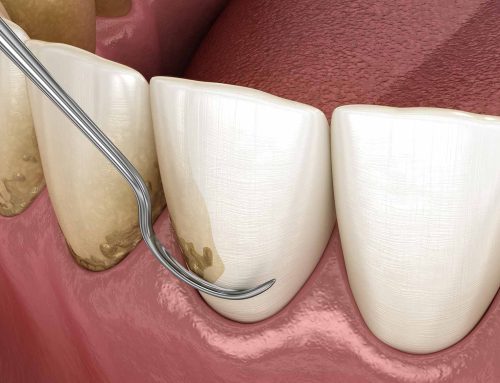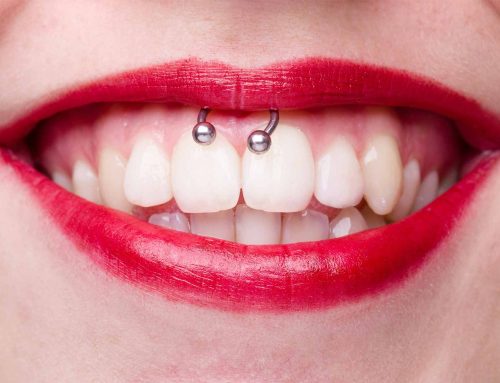Ever since their release, electronic cigarettes (or e-cigarettes) have been marketed as a new-and-improved alternative to traditional cigarettes. Bad breath, yellow teeth and, particularly, cardiovascular disease and cancer: the risks linked to tobacco use are no longer controverted, and from this perspective, vaping appears to be less harmful.
However, it is no longer considered a completely innocuous alternative, especially when it comes to oral health. After all, vaping consists of inhaling and exhaling vapor. The liquid in an electronic cigarette contains chemicals that can damage your mouth. An increasing number of studies agree that this practice affects the oral microbiome to the extent that it makes users more susceptible to infections and inflammation.
The biggest problem? E-cigarettes are in the process of becoming a staple among youths. According to data collected in 2018 and 2019, 34 percent of Canadian junior high and high school students have already tried a vaping product, while 20 percent report having used one during the past 30 days. An earlier survey confirmed that 15 percent of all Canadians age 15 and over have engaged in vaping at one time or another. Given this widespread popularity, which favors regular use and experimentation, even among non-smokers, it’s pertinent to emphasize the very real risks of vaping and its effects on users’ oral health.
What risks does vaping pose to the teeth and gums?
What are the liquids in electronic cigarettes composed of? While there’s no smoke or tar, there is a mixture of nicotine, glycerin, propylene glycol, flavorings, chemicals and metals (nickel, tin and aluminum).
When it comes to risks, the primary culprit is nicotine, the consumption of which, besides encouraging dependence—especially among children and young users—can be the source of a good number of oral-health issues. Potential problems related to vaping include the following:
- General irritation: the damage linked to vaping can affect the mouth, the gums and even the throat. As a result, sensitivity, redness and inflammation become more frequent.
- Dry mouth: this is caused by the propylene glycol content and can lead to bad breath, mouth sores and cavities.
- Thrush: this yeast infection, also known as oral candidiasis, is easily identifiable by the presence of white spots on the tongue and redness inside the mouth.
- Teeth grinding: the stimulant effect of nicotine on the jaw muscles is a lesser-known consequence of e-cigarette use. The result? You clench your jaw unduly and grind your teeth. The short-term effects include wear and tear on the teeth, hypersensitivity and discomfort.
- Premature mouth-cell aging and death: this is caused specifically by inhaling the vapor. The findings of a 2016 study examining this problem are significant: 18, 40 and 53 percent of mouth cells were dead or dying after one, two and three days, respectively, of exposure to vape fumes, as compared with only 2 percent in the case of unexposed cells. Once again, there is an increased risk of gum disease, bone loss, bad breath and cavities.
- Cavities: the numerous sweet flavors offered in e-cigarettes promote the proliferation of bacteria in the mouth, creating fertile ground for cavities and gum disease.
The relationship between vaping and bacteria has been the focus of extensive research. Among the most recent studies, those conducted by the team of Dr. Mahmoud Rouabhia from the Laval University Faculty of Dentistry have caused quite a stir in the field of oral health. The target of the research? A particular strain of bacteria that radically accelerates the onset and development of cavities.
Vaping is at the root of a troubling imbalance in the oral microbiome
The highly viscous vapor from electronic cigarettes remains on the surface of the teeth, thus facilitating the adherence of a particular type of bacteria: Streptococcus mutans. Once established in the mouth, it freely proliferates, leading to a decline in the overall condition of the teeth. The observations of Dr. Rouabhia’s team are incontrovertible: the effects of e-cigarette fumes are comparable to those of cigarette smoke in this regard.
While electronic cigarette technology is still too new to have been thoroughly documented, it’s hard to deny that it has measurably adverse effects. Infection, inflammation, periodontal disease and cavities are just the tip of the iceberg when it comes to factors that can lead to oral cancer. Incidentally, this sobering perspective is part of the current research Dr. Rouabhia’s team is conducting.
However, what should you do if you’ve already started vaping or if you’re using electronic cigarettes to help you quit smoking? Drink plenty of water, gradually reduce the amount of nicotine in your liquid until there’s none, and brush and floss your teeth within 20 minutes after vaping. These little actions can make a big difference.
As a matter of course, a visit to your dentist is imperative. Since vaping is a growing trend among teenagers and young adults, it’s all the more important to learn as much as you can about the matter and seek expert advice to ensure informed use of electronic cigarettes. For guidance you can trust, contact the specialists at Clinique Dentaire Charles Trottier: they’ll give you the straight facts regarding this practice and recommend other proven strategies to quit smoking and enjoy a healthy mouth.
Sources :
Lumino Health. Can vaping damage your teeth and gums? 2020.
Le Soleil. La cigarette électronique néfaste pour la bouche. [The mouth-damaging electronic cigarette] 2016.
Government of Canada. Vaping in Canada: what we know. 2021.





